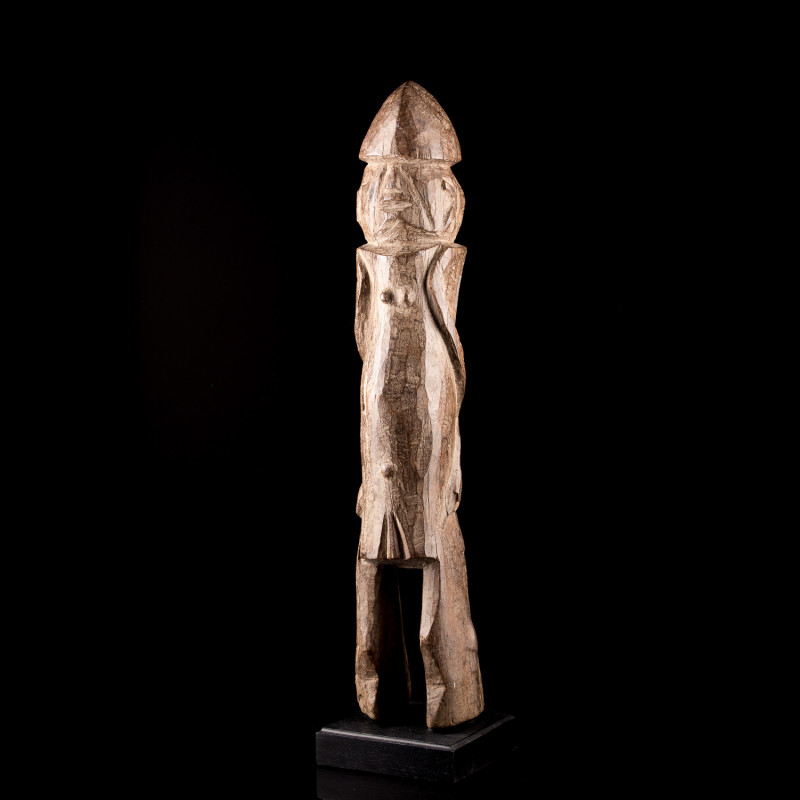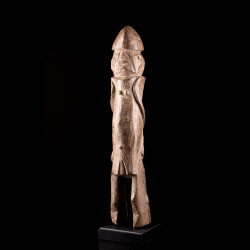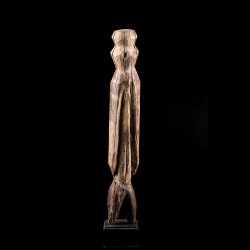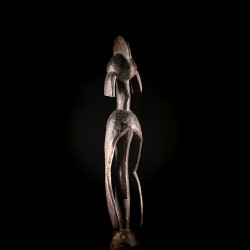
























Chamba religion was almost exclusively initiatory, with knowledge acquired through successive initiations, through observation as well as instruction. Thus, Chamba religious thought and action cannot be understood through the ordinary question-and-answer process that may illuminate some aspects of the canonical catechisms and beliefs of some world religions.
The Chamba were not atypical in this respect, as the peoples of the Benue middle range shared many of their religious ideas and practices. Religious rites, for example, were always transmitted through an initiatory process.
Our analysis suggests that in order to understand Middle Benue objects dynamically and historically, it is important to discern the artefactual ethnicity with which they have been imbued since their original creation. The wooden sculptures of the Middle Benue have acquired attributes additional to their ethnic values, stemming from the appreciation of their aesthetic forms as African art, and contributing to more generalized art narratives, such as those of modernism. It should be noted, however, that this increase in aesthetic value can only occur if the object has already acquired the artefactual ethnicity that gives it its authenticity. The other values are competent but do not supplant the ethnicity of the work.
You might also like

Chamba religion was almost exclusively initiatory, with knowledge acquired through successive initiations, through observation as well as instruction. Thus, Chamba religious thought and action cannot be understood through the ordinary question-and-answer process that may illuminate some aspects of the canonical catechisms and beliefs of some world religions.
The Chamba were not atypical in this respect, as the peoples of the Benue middle range shared many of their religious ideas and practices. Religious rites, for example, were always transmitted through an initiatory process.
Our analysis suggests that in order to understand Middle Benue objects dynamically and historically, it is important to discern the artefactual ethnicity with which they have been imbued since their original creation. The wooden sculptures of the Middle Benue have acquired attributes additional to their ethnic values, stemming from the appreciation of their aesthetic forms as African art, and contributing to more generalized art narratives, such as those of modernism. It should be noted, however, that this increase in aesthetic value can only occur if the object has already acquired the artefactual ethnicity that gives it its authenticity. The other values are competent but do not supplant the ethnicity of the work.


